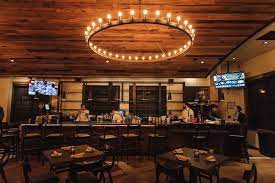Table Wines from Bordeaux to Napa Valley and Beyond
Table wines hold a special place in the world of oenophiles, offering a diverse array of flavors and aromas to tantalize the palate. From the storied vineyards of Bordeaux to the sun-drenched hillsides of Napa Valley and beyond, these wines reflect the unique terroir and winemaking traditions of their respective regions. Let’s embark on a journey through the world of table wines, exploring the rich tapestry of flavors that await.
Bordeaux: A Classic Destination
Bordeaux, nestled along the banks of the Garonne River in southwestern France, is synonymous with fine wine production. Its maritime climate, coupled with gravelly soils, provides the perfect conditions for cultivating a variety of grape varietals, including Cabernet Sauvignon, Merlot, and Cabernet Franc. Bordeaux is renowned for its appellations, such as Médoc, Saint-Émilion, and Pomerol, each offering distinctive characteristics that showcase the region’s terroir.
Napa Valley: The American Gem
In contrast to Bordeaux’s centuries-old winemaking tradition, Napa Valley is a relative newcomer to the world stage. However, since its inception in the mid-19th century, Napa has risen to prominence as one of the world’s premier wine regions. Its Mediterranean climate and diverse terroir make it ideal for cultivating a wide range of grape varietals, including Chardonnay, Cabernet Sauvignon, and Pinot Noir.
Beyond Bordeaux and Napa: Emerging Regions
While Bordeaux and Napa Valley may steal the spotlight, there are numerous other regions around the globe producing exceptional table wines. From the rolling hills of Tuscany to the rugged coastline of South Australia, these emerging regions offer a wealth of diversity and innovation. Whether it’s the bold, spicy wines of Argentina’s Mendoza region or the elegant, mineral-driven wines of Germany’s Mosel Valley, there’s something for every palate to discover.
Factors Influencing Table Wine Quality
Several factors contribute to the quality and character of table wines, including climate, geography, and winemaking techniques. Regions with moderate climates and well-drained soils are often prized for producing high-quality grapes, while winemakers employ various techniques such as oak aging and malolactic fermentation to enhance flavor and complexity.
Tasting Table Wines: Tips and Tricks
Tasting table wines is a sensory experience that engages all the senses. Start by examining the wine’s appearance, noting its color and clarity. Next, take a moment to savor the aroma, identifying any fruit, floral, or spice notes. When tasting the wine, pay attention to its acidity, tannins, and overall balance. With practice, you’ll develop a discerning palate capable of appreciating the nuances of each wine.
Pairing Table Wines with Food
Pairing table wines with food is an art form unto itself, with endless possibilities for exploration and experimentation. Classic pairings, such as Cabernet Sauvignon with steak or Chardonnay with seafood, provide a reliable starting point. However, don’t be afraid to think outside the box and experiment with unexpected flavor combinations. Whether it’s a spicy Thai curry paired with a crisp Riesling or a rich chocolate dessert accompanied by a velvety Merlot, the possibilities are endless.
Sustainability in Table Wine Production
In an increasingly eco-conscious world, sustainability has become a top priority for many wine producers. From organic and biodynamic farming practices to renewable energy initiatives and water conservation efforts, wineries around the globe are embracing sustainability as a core value. By minimizing their environmental footprint, these producers are not only preserving the land for future generations but also producing wines of exceptional quality and character.
The Future of Table Wines
As we look to the future, the world of table wines is ripe with possibility. Emerging technologies such as precision viticulture and genetic mapping hold the promise of revolutionizing grape growing and winemaking practices. Additionally, shifting consumer preferences towards lighter, fresher styles of wine are reshaping the market landscape. Whether it’s embracing sustainability, harnessing technology, or adapting to changing tastes, one thing is certain: the world of table wines is ever-evolving and endlessly fascinating.
Conclusion
From the hallowed vineyards of Bordeaux to the sun-soaked slopes of Napa Valley and beyond, table wines offer a tantalizing glimpse into the rich tapestry of flavors that define our world. Whether you’re a seasoned oenophile or a curious novice, there’s always something new to discover and explore. So raise a glass and toast to the endless possibilities that await in the world of table wines.
FAQs
What is the difference between table wine and other types of wine?
Table wine typically refers to still wines with lower alcohol content, meant to be enjoyed with meals. Other types of wine, such as sparkling or fortified wines, may have higher alcohol levels or carbonation.
Are table wines suitable for aging?
While some table wines can benefit from aging, most are intended for immediate consumption. It’s essential to check the label for guidance on aging potential.
What are some emerging regions for table wine production?
Regions such as Chile’s Colchagua Valley, South Africa’s Swartland, and New Zealand’s Marlborough are gaining recognition for their table wines.
How should I store table wines?
Table wines should be stored in a cool, dark place away from direct sunlight and fluctuations in temperature. Ideally, they should be stored on their side to keep the cork moist.
What food pairings work best with table wines?
Table wines are incredibly versatile and can be paired with a wide range of foods, from hearty meats and cheeses to fresh seafood and salads. Experimentation is key to finding the perfect pairing for your palate.




